Purple spots appeared on tomato leaves: why this could happen and how to save your tomato crop
Experienced gardeners know that developmental disorders can be determined by the appearance of tomato bushes. Solanaceae react quickly to mistakes in grooming and, by their appearance, require immediate attention from the farmer. Many diseases of tomatoes are accompanied by the appearance of spots of various colors. Some formations are harmless, others can cause the death of the entire crop.
What to do if purple spots appear on tomato leaves, why is it dangerous and how to fix the problem? The answers are in our article, supplemented with useful photographs.
The content of the article
Symptoms and problem detection
The appearance of stains on the foliage of tomatoes is a symptom that cannot be ignored... The color and appearance of the education can identify the source of the problem.
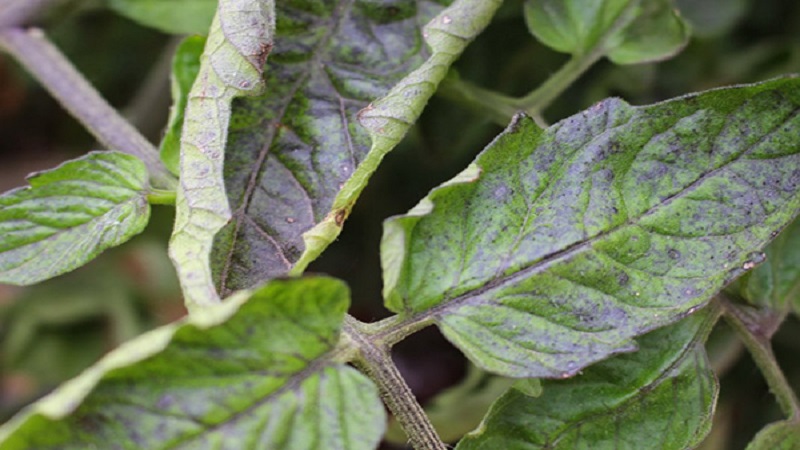
Purple foliage most often indicates the need to replenish the soil.... The color, uncharacteristic for the tops, is produced under the influence of the anthocyanin pigment. The lack of useful trace elements forces plants to intensively produce this substance.
The color change of the tops does not occur rapidly... First, the color of the lower leaves changes: pink or lilac spots form on them below, which over time acquire a rich purple color. The leaf plate grows dull, the veins coarsen, and spots appear and spread along the rest of the shoots.
Why is it dangerous
A change in the color of the leaves of seedlings from green to purple is considered harmless if not accompanied by the appearance of plaque. But you still have to take measures to preserve the health of the plant. In a neglected case, the degradation of seedlings is possible, which can cause its death
Leaves that have turned purple may begin to curl... Changes take place in the trunk: it loses its elasticity and becomes brittle. The villi covering the stem elongate and become stiff.
The flowering process is delayed, which affects the number of ovaries... If you do not pay attention to this problem in time, the fruits grow slowly and grow small. The seeds on such a plant do not ripen, so collecting seed is pointless. The plant loses its resistance to low temperatures and becomes painful. Its root system may begin to die off.
Why do purple spots appear on tomatoes? This often indicates cultivation errors.: it can be a violation of the temperature regime or imbalance in the soil.
Possible reasons
there is several reasons for the foliage to turn purple... Let's consider each of them in detail.
Lack of phosphorus
The element is necessary throughout the entire period of growing tomatoes... Its deficiency is especially dangerous in the first stage of seedling development. Tomatoes store a trace element and then consume it as they grow.
About other diseases of tomatoes:
Saving tomatoes from phytophthora
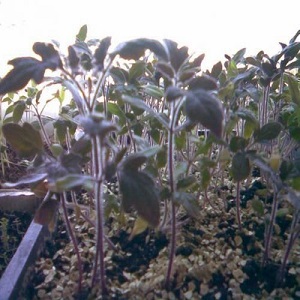 Effect of phosphorus on tomatoes:
Effect of phosphorus on tomatoes:
- participates in metabolic processes;
- serves as a source of energy;
- enhances the growth of the root system;
- accelerates flowering and ripening of fruits;
- increases sugar content and the amount of pulp in tomatoes;
- increases productivity.
Lack of phosphorus negatively affects all parts of the plant... Stems and foliage of seedlings acquire a dark green color, eventually turning into a purple-purple color. Plant growth stops, which affects its yield.
Signs of phosphorus deficiency:
- spots of a purple hue appear on the lower leaves;
- formations are distributed throughout the plant, including the trunk;
- foliage collapses, rises up and presses against the stem;
- the trunk becomes fibrous, stiff and brittle;
- the root system is depressed.
Important! Phosphorus deficiency affects the absorption of nitrogen necessary for the growth of seedlings.
Incorrect temperature conditions
Too low or high temperature results in to a violation of the digestibility of the trace element. The leaves turn purple when the air temperature drops to +14 ° C or rises to +40 ° C.
Imbalance in the soil
Solanaceae are demanding crops that depend on balanced soil. Lack of nutrients can lead to the death of the plant.
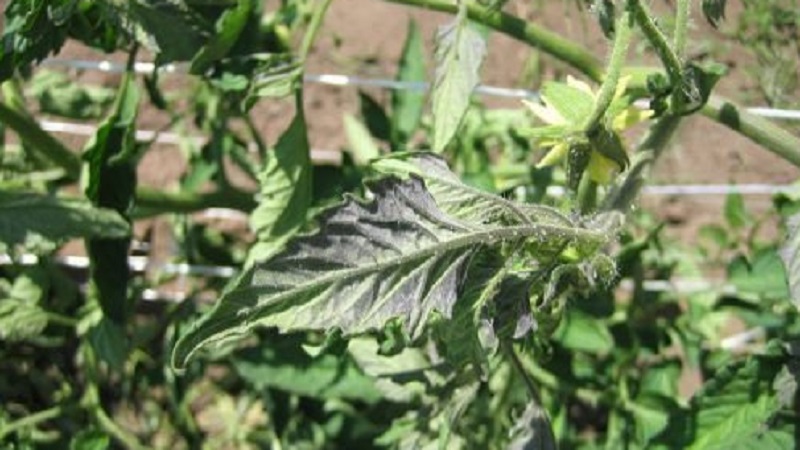
These elements are important for the health of tomatoes.:
- magnesium;
- potassium;
- nitrogen;
- zinc.
The lack of any element negatively affects the growth and productivity of the plant.... It is possible to determine the imbalance of the soil by the tops: with a lack of phosphorus, the lower leaves suffer, while the lack of magnesium affects the upper, young leaves.
Important! The blue discoloration of the seedling stalks at the base may indicate an admitted overdose of manganese during soil disinfection. In some cases, the color change is just a feature of the variety or hybrid.
Seedlings may turn purple due to excess alkali in the soil... A neutral or slightly acidic soil is suitable for growing tomatoes. An excess of acids and alkalis leads to the fact that liquid phosphorus supplements return to a solid form, without having the desired effect.
Control methods
After identifying the symptom, you must immediately take action to save the crop... It is important to correctly identify the source of the problem so as not to ruin the plants. Treatment of purple spots with drugs is not carried out - this problem is caused by care errors. The situation can be corrected by raising the temperature and making additional dressings.
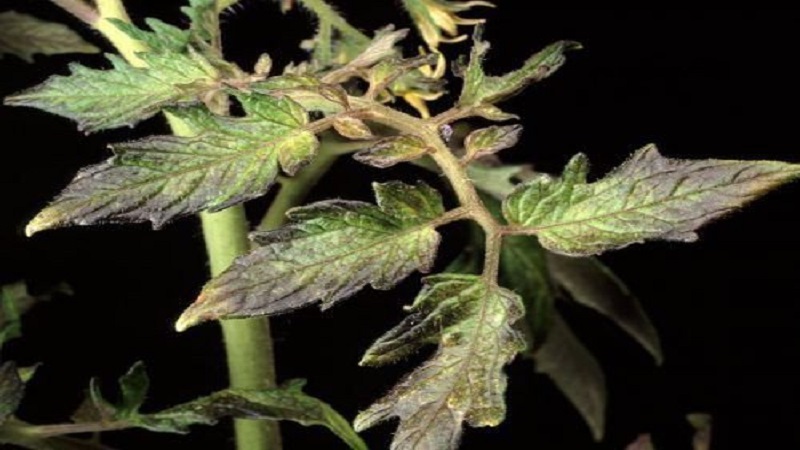
Maintaining optimal air temperature
Cold affects young plants negatively... If the seedlings are grown at home, they must be protected from cold air. In greenhouses, all vents and doors are closed, additional heaters are installed. Only warm water is used for irrigation. If tomatoes grow in open ground, during the cold snap they are covered with additional film material.
The seedlings can turn blue in the first days of hardening.... You can start putting pots with plants in the open air at a temperature of +18 ° C. Experienced gardeners believe that adaptation to open air is possible even at + 16 ° C - this will make the seedlings more resistant to adverse weather conditions.
Read also:
Fertilization
Top dressing is applied only when the probability of freezing of plants is excluded... If the air temperature is favorable and the seedlings turn purple, this is a sign of starvation.
If there is a lack of phosphorus, the plants need to be fed... For this, 2 tbsp. l. superphosphate is dissolved in 1 liter of boiling water and the mixture is infused for 10 hours. Before use, the volume of the solution is brought to 10 liters. The mixture is suitable for watering a bush at the root, 0.5 liters of liquid is enough for one plant.
Besides root processing, you can spray seedlings with 0.5% fertilizercontaining phosphorus.
Fertilizers will help fill the micronutrient deficiency:
- "Superphosphate";
- "Double superphosphate";
- Ammophos;
- "Diammophos".
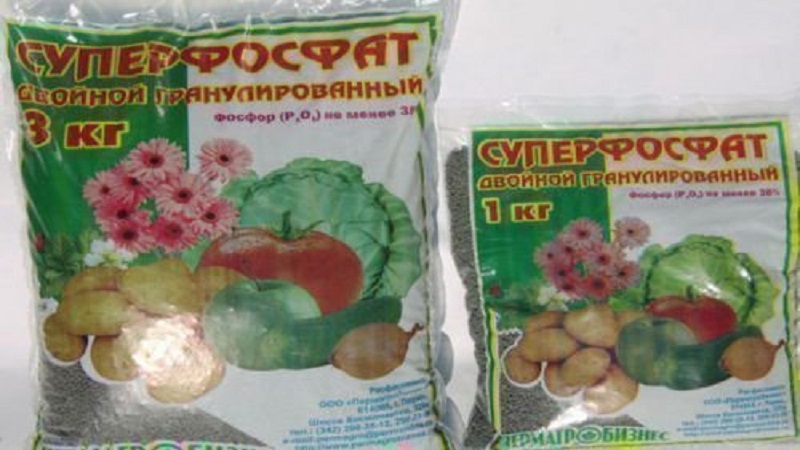
Instructions for the correct application of phosphorus:
- Fertilizer granules are applied dry when digging the soil or dissolved in water for irrigation.
- A month before the introduction of phosphorus, acidic soil must be limed.
- Phosphates are used after the end of the season so that they can be fully absorbed by the soil by spring.
Gardeners who are afraid to use mineral fertilizers on their plots can feed the seedlings with wood ash, bone meal or humates... A natural source of phosphorus is composts based on herbs: wormwood, feather grass, hawthorn, thyme and rowan berries.
Important! An excess of phosphorus is fatal to tomatoes.
You can determine an excess of a trace element by the signs: yellowing and falling foliage, the appearance of brown and yellow spots.
For magnesium deficiency, use top dressing - 2 g of magnesium sulfate is diluted in 1 liter of water.
Preventive measures
A balanced soil is an important factor for a good harvest.
Phosphorus deficiency is easy to prevent, applying fertilizers on time:
- When planting tomatoes, add superphosphate to the soil - 15 g for each bush.
- After planting the seedlings, treat the plants with a solution - 10 l of water 10 tsp. "Nitrofoski", "Azofoski" or "Nitroammofoski".
- Spray the bushes in the morning and in the evening with a solution of "Superphosphate".
- During mass flowering, feed the plants with Ammofoskoy.
- Use potassium monophosphate for root and foliar treatment 2 times per season.
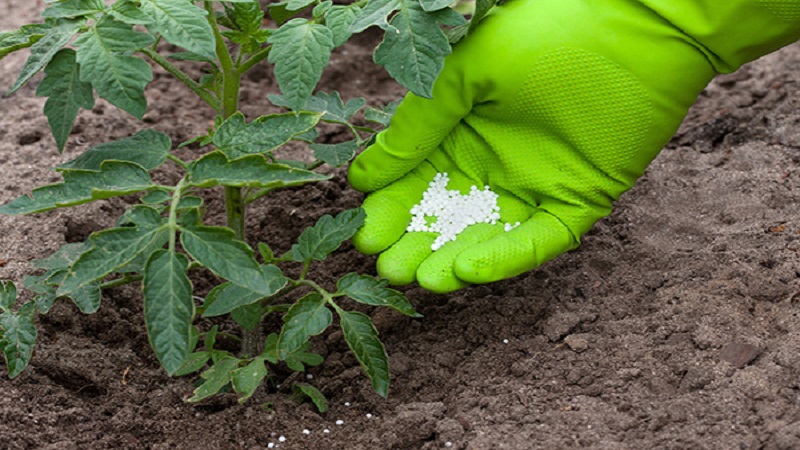
Agrotechnical techniques:
- after the end of the season, clear the area of vegetation;
- add dolomite flour, lime or chalk to the soil;
- add humus or compost during autumn digging;
- sow green manure plants in autumn and spring: legumes, cereals, cruciferous plants.
Tips and tricks from experienced farmers
You can solve the problem of the appearance of purple spots in a few hours - after foliar treatment with phosphates.
There are several secretsthat need to know for those who are struggling with this difficulty:
- Wood ash tends to alkalize the soil, so use it sparingly.
- You can determine the excess of phosphorus in the soil by planting early varieties of radish on the garden bed. Excessive content of the trace element will lead to a high percentage of root crop shooting.
- Phosphate rock is another type of fertilizer. It interacts well with acidic fertilizers and manure. For more efficient use, it is laid in compost.
Conclusion
If purple spots appear on the seedlings, this is an alarming signal. However, with a quick response, the change in leaf color will not affect the plant in any way. It is easy to eliminate the cause of the color change - it is enough to control the air temperature or apply the necessary fertilizers.
If the bushes become purple due to a phosphorus deficiency, the deficiency is eliminated using root and foliar treatment. The result will appear the very next day. It is important to correctly identify the source of the problem so as not to harm the plant.